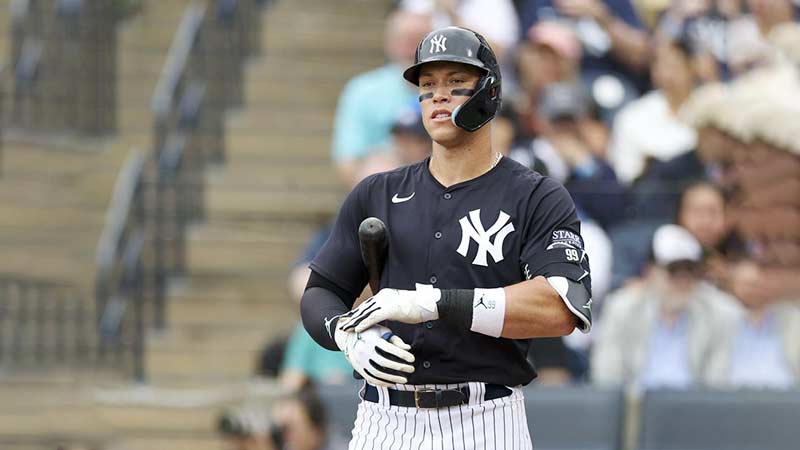Cheating in baseball isn’t just a modern-day scandal; it’s a well-worn chapter in the sport’s storied history. From doctoring balls with saliva to using performance-enhancing substances, players have long sought ways to bend the rules for an edge.
Even legends like Gaylord Perry, who pitched for 22 seasons, admitted to doctoring balls in his book Me and the Spitter.
These acts of deception, whether it’s altering equipment or stealing signs electronically, have sparked endless debates about the integrity of the game. While some see it as strategic gamesmanship, others argue it tarnishes the sport’s reputation.
Understanding the various methods and motivations behind cheating can give you a deeper insight into baseball’s complex relationship with its own rules.
Historical Overview of Cheating in Baseball
Cheating in baseball has a rich and complex history, stretching back to the early days of the sport. Let’s delve into a historical overview:
Early Instances and Notable Scandals
Cheating in baseball dates back to the sport’s early days with infamous instances like the 1919 Black Sox Scandal, where eight Chicago White Sox players were permanently banned for intentionally losing the World Series for money from gamblers.
Another event occurred on August 19, 1951, when the St. Louis Browns used Eddie Gaedel, who was 3 feet 7 inches tall, to bat and exploit his small strike zone.
This led to American League President Will Harridge voiding Gaedel’s contract the next day in an attempt to erase the stunt from the records.
Evolution of Cheating Techniques Over the Decades
Cheating methods have evolved significantly over the decades. In the 1970s and 1980s, pitchers often used foreign substances to manipulate the ball.
For example, Don Sutton was ejected and suspended in 1978 for defacing the ball. Kevin Gross, while pitching for the Phillies on August 10, 1987, was caught with sandpaper in his glove and faced a 10-game suspension.
Players continued to innovate, with some using electronic devices to steal signs in recent years. These evolving tactics underscore the persistent challenge of maintaining fair play in baseball.
Common Methods of Cheating in Baseball
Cheating in baseball has manifested through various methods aimed at gaining an unfair advantage. Here are some common techniques:
Doctoring the Baseball
Doctoring the baseball involves altering the ball to gain an unfair advantage. Pitchers often use substances like Vaseline or pine tar, or even scratch the ball with sandpaper.
Michael Pineda of the New York Yankees, for example, was ejected in 2014 for having pine tar on his neck.
Don Sutton, accused of scuffing the ball in 1978, was suspended for 10 days. These actions affect the ball’s aerodynamics, making it harder for hitters to predict its trajectory.
Corked Bats and Altered Equipment
Using corked bats or other altered equipment provides hitters with a competitive edge. Corking a bat involves hollowing out its core and filling it with lighter materials like cork. This makes the bat lighter and easier to swing, potentially increasing the speed and distance of a hit.
Although the practice is illegal, some players still use it to enhance performance. MLB confiscated Kevin Gross’s glove in 1987 after finding sandpaper inside, leading to his suspension.
Sign Stealing and Technological Aids
Sign stealing involves decoding the opposing team’s hand signals to predict pitches or plays. Technological aids have recently advanced this practice.
Teams use video cameras, electronic communication, and other devices to relay signals to players, providing an unfair advantage. Electronic sign stealing has gained notoriety, sparking significant controversy in Major League Baseball.
Major Scandals and Their Impact on Baseball
Major scandals in baseball have left a lasting impact on the sport, shaping its history and prompting changes to maintain integrity. Here are some significant scandals and their effects:
The Black Sox Scandal
The 1919 Black Sox Scandal stands as one of the darkest moments in baseball history. Eight Chicago White Sox players, including the talented outfielder Shoeless Joe Jackson, conspired with gamblers to intentionally lose the World Series.
This betrayal led to a lifetime ban for all involved players despite their not-guilty verdicts in court. These actions left a lasting stain on the sport’s legacy and highlighted the vulnerability of baseball to corruption.
The Steroid Era
The Steroid Era, spanning the late 1980s to the mid-2000s, saw numerous players enhance their performance using steroids and other performance-enhancing drugs (PEDs). This period brought to light the extent of chemical assistance in achieving record-breaking stats.
Prominent players faced suspensions, damaged reputations, and Hall of Fame exclusions. These revelations led MLB to implement stricter drug testing policies, permanently altering public perception and the integrity of the game.
The Astros Sign-Stealing Controversy
The Astros Sign-Stealing Controversy, uncovered in 2019, revealed that the Houston Astros used electronic means to steal signs during the 2017 and 2018 seasons.
Players and staff used cameras to relay pitch information to batters, giving them an unfair advantage. The scandal resulted in heavy fines, suspensions for key personnel, and the firing of the Astros manager and general manager.
This controversy emphasized the need for stringent regulations on technology use in baseball and sparked widespread debate on maintaining the sport’s purity.
Regulatory Measures and Penalties
Regulatory measures and penalties play a crucial role in maintaining the integrity of baseball. Let’s explore how Major League Baseball (MLB) addresses cheating and rule violations:
Role of Major League Baseball (MLB)
Major League Baseball (MLB) plays a crucial role in maintaining the integrity of the sport. MLB’s enforcement actions include suspensions, fines, and the introduction of new rules.
For example, MLB suspended Michael Pineda of the New York Yankees for 10 games in 2014 after he was found with pine tar on his neck. MLB also suspended Kevin Gross for 10 games in 1987 when sandpaper was discovered in his glove.
Additionally, MLB imposed a 10-game suspension on Rick Honeycutt in 1980 for having a tack on his glove hand. These penalties aim to deter players from engaging in unfair practices and to ensure a level playing field.
Changes in Rules and Monitoring
MLB has implemented several changes to rules and monitoring to combat cheating. In 2021, MLB introduced new guidelines to tackle the use of foreign substances by pitchers. It ramped up inspections, requiring umpires to regularly check pitchers for hidden substances.
MLB increased scrutiny on equipment and personal items, like gloves, caps, and hands, to prevent pitchers from gaining an unfair advantage.
By enforcing these measures strictly, MLB seeks to reduce instances of cheating and maintain the sport’s integrity. The enhanced monitoring illustrates MLB’s commitment to ensuring that all players adhere to the rules.
Frequently Asked Questions
What is the Astros Sign-Stealing Controversy?
The Astros Sign-Stealing Controversy in 2019 involved the Houston Astros illegally using electronic equipment to steal signs from opposing teams, leading to fines, suspensions, and firings.
How do pitchers cheat in baseball?
Pitchers may use substances like pine tar or sunscreen to doctor baseballs, altering their grip and movement to gain an unfair advantage over batters.
How does MLB combat cheating?
MLB combats cheating by enforcing rules, such as suspensions and fines, implementing increased inspections, and monitoring equipment to maintain the sport’s integrity.
What is electronic sign stealing?
Electronic sign stealing involves using technology to decode and relay an opposing team’s signals to gain an advantage, a practice that has led to major scandals in MLB.
Have other teams besides the Astros been accused of cheating?
Yes, teams like the Yankees and Red Sox have been accused of using technology to decode signs, leading to penalties and increased scrutiny on technology use in the sport.
Conclusion
Cheating in baseball has evolved significantly over the years, from early scandals to modern technological infractions. While the methods have changed, the impact on the sport’s integrity remains a pressing issue.
Major League Baseball’s proactive measures and stricter regulations aim to preserve the fairness and spirit of the game. As a fan, staying informed about these developments helps you appreciate the ongoing efforts to maintain baseball’s cherished values.
Understanding the history and current measures against cheating also provides insights into the challenges the sport faces. By recognizing these efforts, fans can support a cleaner, competitive environment.
Fans play a crucial role in promoting accountability by voicing concerns and fostering a culture of integrity. Engaging with the sport through this lens not only enriches the spectator experience but also upholds the traditions that make baseball enduringly beloved.








Pat Bloom